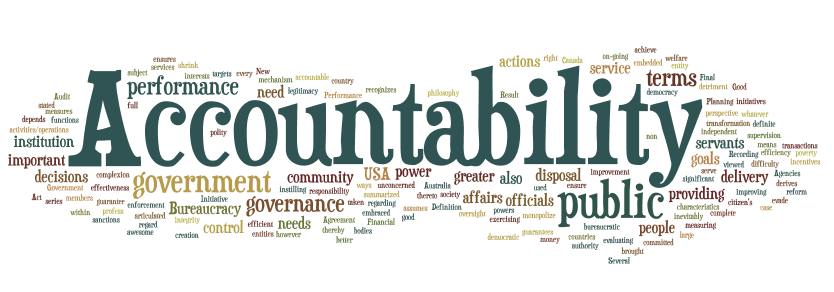Crisis of Accountability and Governance in India
Accountability in India has two facets, separate but interrelated. The first is political, where the executive is accountable to Parliament, which has many devices and Instrumentalities for keeping tabs on the executive.
The second facet is primarily administrative, where the (political) executive holds the civil servants accountable for how they carry out their responsibilities.
The executive’s accountability to Parliament is total and unabridged, which the latter reasserts in many ways and on many occasions. In calling the executive to account, Parliament has at its command numerous tools and opportunities, such as parliamentary questions, adjournment motions, vote of no-confidence, discussion on demands for grants, calling attention notice, half-an-hour discussion, zero-hour discussion, etc.
All civil servants working in a ministry are accountable to the minister. As the minister is responsible to the legislature for actions and inaction of the civil servants, the latter must obviously be held accountable to him. The civil servants must know well their minister’s mind and seek faithfully to project it in what they do.
- They must observe, in all their official transactions with citizens, due process of law and laws of natural justice.
- They must remain alive to the sensitivities of the legislature and must abjure from doing things which might embarrass the minister, particularly in his relationship with the former.
- They must be responsive to the larger public opinion.
Accountability is made more specific and is ensured by a complex of organizational and procedural devices. Hierarchy is itself an accountability-fixation exercise. Therefore, without adequate control and supervision over the actions of the lower levels, accountability can hardly be enforced.
Span of control, unity of command, inspection, supervision, etc, are other well-known devices facilitating accountability. Noting is also a mechanism of accountability. The executive, the legislature, and the judiciary—must remain in a state of dynamic equilibrium, for any disturbance in their equation subjects the political system to stress.
The mechanisms to keep the executive accountable are found to be insufficient and inadequate. The power of the executive has expanded enormously, largely by design but partly also by accident.
Parliament’s control over the executive is inadequate, the two bodies being ill-matched. Consequently, the controlling authority of Parliament is also ineffective. The executive is not compelled to take action even against a civil servant censured by Parliament.
The control of the political executive cannot be qualitatively different in its impact from parliamentary control. If Parliament cannot even remotely touch the public servant, it is too much to expect the political executive to consistently keep the civil service accountable.
Effective control should not be confused with exercising terror. Control must not in the least be inhibitive of managerial initiative and risk taking—qualities which are vital for growth and development. But terror tactics, through arbitrary actions, may totally demoralize the bureaucracy.
Adequate control on the executive, and thereby the public administration, calls for an alert Judiciary, a vigilant Parliament, a fearless and watchful press, and powerful watchdog organizations.
It is vital, therefore, that these institutions move forward to restructure themselves, redesign their business practices, and thus reinforce them. The emergence of the administrative state is inevitable in modern times but its abuses and dangers posed must be countered by strengthening extra-administrative state institutions and processes. The unwieldy size of present-day bureaucracy itself makes it difficult to bring it to account. Civil service must be pruned; and the surviving part should, as far as possible, be brought under social audit.


